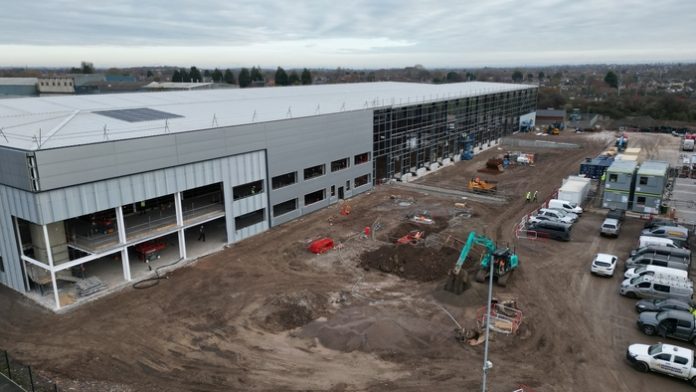The industrial and logistics property market in Greater Bristol experienced take-up higher than the five-year average in 2022 with the strongest start to the year for two decades. However, the bumper expectations of the year didn’t play out as anticipated, leading to a year of two halves as the downturn in the economy took hold.
The year finished with a 10.8% fall in the market (v 2021), with 35 deals secured in Q4, across 348,947 sq ft of space. The total year saw 2,370,997 sq ft of space and 45.89 acres of land sold across 154 transactions, according to the Western Branch of the Industrial Agents Society.
“These figures will come as no surprise given the challenges the economy is facing at the current time,” observes James Short, Senior Surveyor at strategic real estate adviser Avison Young in Bristol.
“We are however expecting momentum to regain as 2023 progresses – a year of continued strong demand set against one of the lowest levels of standing supply ever seen, and limited prospects of new delivery. Rental growth will therefore be at more modest levels but the shortage of stock will hold current values in place. Freehold demand will continue to be particularly strong.”
Twelve months ago the year was starting with an upward trajectory in the market.
James observes, “The previous year had surpassed all records as supply chain providers rapidly remodelled their platforms during Covid to support the growth of internet fulfilment and protect against shipping delays. We saw developers and investors switch rapidly from other sectors such as offices and retail to the new world of industrial, and in consequence, rents rose 25% and investment yields fell to sub 4%, with serviced employment land doubling in price in certain instances.
“Early predictions for 2022 anticipated perhaps more modest growth rates. Yet demand continued to be strong and new supply was constrained by construction material and labour supply shortages.
“However, no one could have predicted the impending impacts of the Ukraine conflict and UK political instability combining to act as a sharp correction to the market.”
As interest rates and energy costs increased, property and labour cost inputs spiralled. Viability of new projects was tested and several construction starts stalled across the region. There is also a sense that with a modest return to the high street the structural changes in the supply market have plateaued.
ESG adds a further important factor to the mix.
James adds, “Never before have the environmental credentials of a building mattered so much with energy costs and corporate goals becoming a key determinant of a deal. The market has seen a genuine push towards ESG, sustainability and energy performance and this continues to be a key focus for landlords, as they build out additional Grade A stock, and further retrofit existing stock.
“You need look no further than best in class buildings, such as Matrix 49 at Avonmouth and Unit G5, at Horizon 38 in North Bristol, both currently in construction, for examples of how developers are responding to market demands.”



















